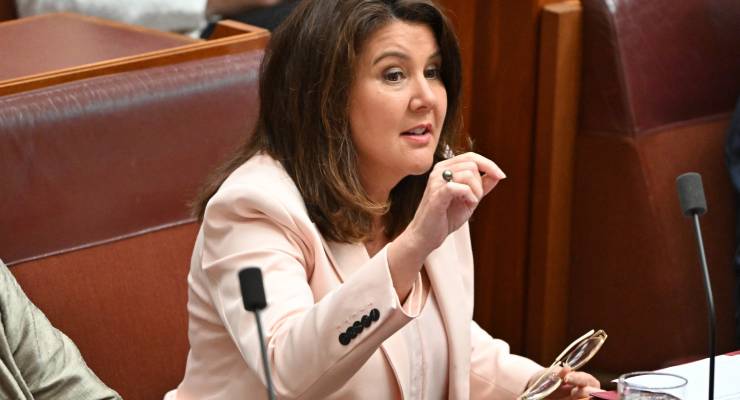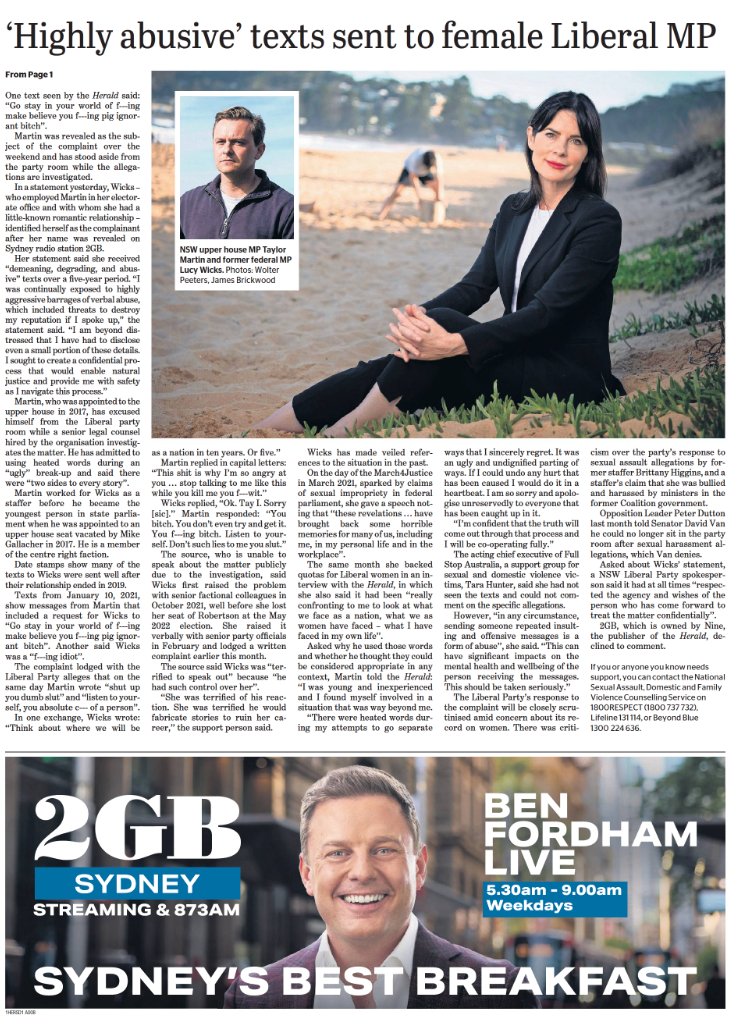
Merch search A while back we revealed that the Australian Signals Directorate (ASD) had entered into a $252,067.50 contract for “promotional merchandise”. A tipster got in touch to give us some examples of what defence agencies got for their money: “The higher-end stuff is like plaques and medallions. Run-o-mill is wine glasses or tankards, keep cups, moleskin notebooks — I have an ASD one — coasters, tote bags, pens, water bottles etc. My fave score is an ASIS litre beer stein.”
It got us wondering what other areas of defence are producing branded mugs that are also a potential threat to national security. Turns out Liberal Senator Jane Hume shares our curiosity, and used the 2023-24 budget estimates to put the question (via questions on notice) to various defence agencies. So far, she’s received two answers: one from the ASD, that revealed the contract we picked up on was only the half of it — in the 2022-23 financial year, the cyber spies spent $490,501 on “promotional merchandise to promote ASD’s public facing cyber security function, recruitment and for commemorative purposes”. The Defence Department meanwhile, spent a whopping $2,358,729 on promotional merchandise in 2022-23 up until June 26 2023.
Every other agency, including the Australian War Memorial and the Australian Strategic Policy Institute, has so far left the question, now overdue, unanswered. We’ll keep you posted on the other figures as they come out.
Layout issues The history of the newspaper business is riddled with examples of badly chosen ad placements — from the merely awkward to the genuinely horrific. See if you can work out the slightly off ad choice on the page dedicated to The Sydney Morning Herald‘s story concerning the “highly abusive” texts NSW upper house MP Taylor Martin sent to former federal MP Lucy Wicks.

Wicks had wanted to make her complaints about Martin confidentially, but had her name made public against her wishes by 2GB shock jock Ben Fordham, the man smiling and offering us “Sydney’s best breakfast” on the bottom fifth of the page.
Fonts of wisdom What is it with billionaires and not wanting to just hire a graphic designer? As Twitter, continuing to shudder like a clown car shedding all its parts, pupated into X, the new logo caused a stir. In the most Elon Musk of approaches to a rebrand, the site’s CEO tried to post his way to a new logo, telling his cavalcade of love-heart-eyed reply guys that: “If a good enough X logo is posted tonight, we’ll make [it] go live worldwide tomorrow.” A user called Sawyer Merritt obliged and Musk snapped it up.
Soon, though, people started noting the remarkable similarity between the new X logo and the capital X glyph from “Special Alphabets 4”, a font created by Monotype, the guys who brought you Times New Roman and Ariel.
And we have to say, it does bear a striking resemblance — this is off “Special Alphabets 4” which can be purchased for the very reasonable price of US$29.99.

Monotype, for its part, has confirmed via spokesperson Phil Garnham that “whilst it is similar, this is not the capital X glyph from Monotype’s ‘Special Alphabets 4′ ” (emphasis added). Interestingly, it has not yet answered the obvious follow-up question it received: does it match Special Alphabets 4’s lowercase X, which the new Twitter logo more closely resembles?
The whole utterly avoidable kerfuffle put in our mind the time Gina Rinehart’s people got in touch to ask us if they could buy the artwork we’d used to illustrate a piece partially crediting her with funding the intellectual decay of the Liberal Party.








Baby steps. If you’ve got to convert foreigners to sell out their own country then you first have to at least be able to sell merch like an Instagram influencer. Maybe one day they’ll achieve. But first they’ll have to ask all the Moles in the ASD and Defence force. Australia is the distribution hub of intelligence to everyone. That’s why the USSR originally requested that listening bases be setup in Australia, now China needs some AUKUS submarines to know what’s going on in 40 years.